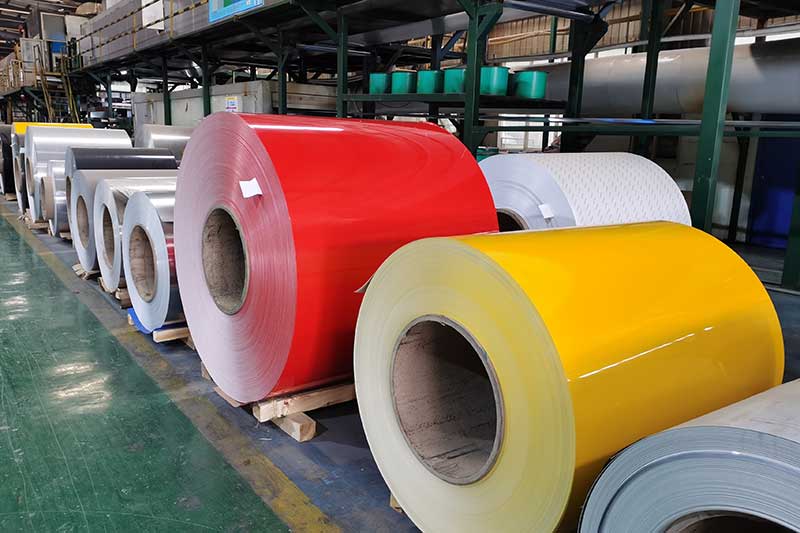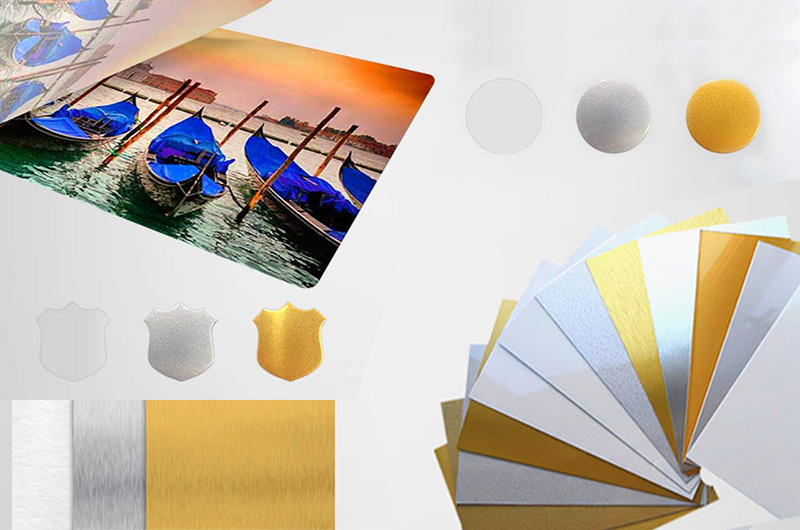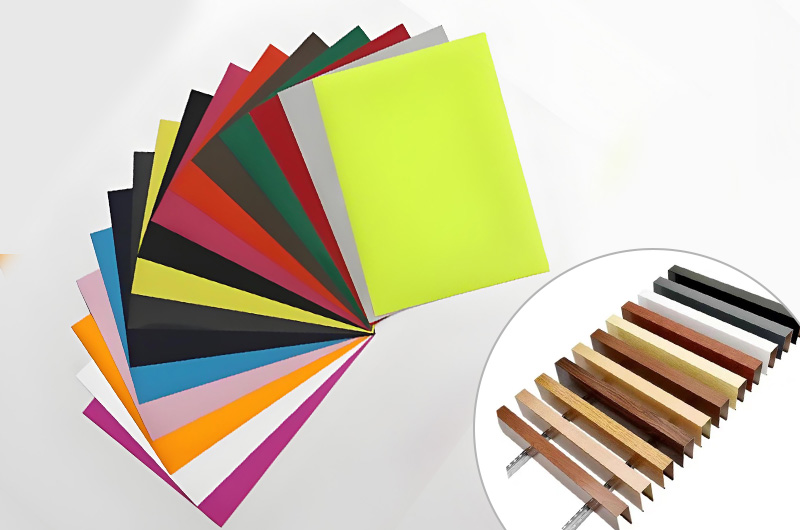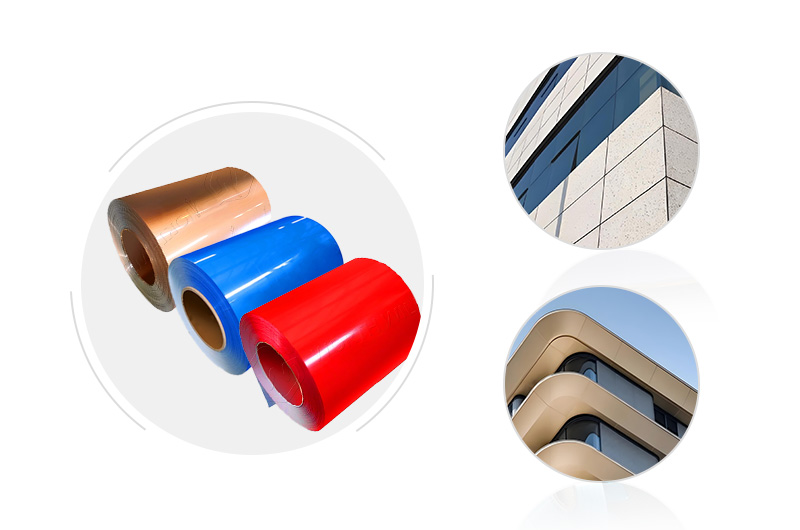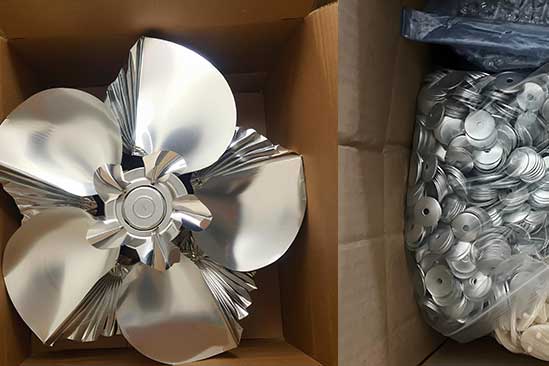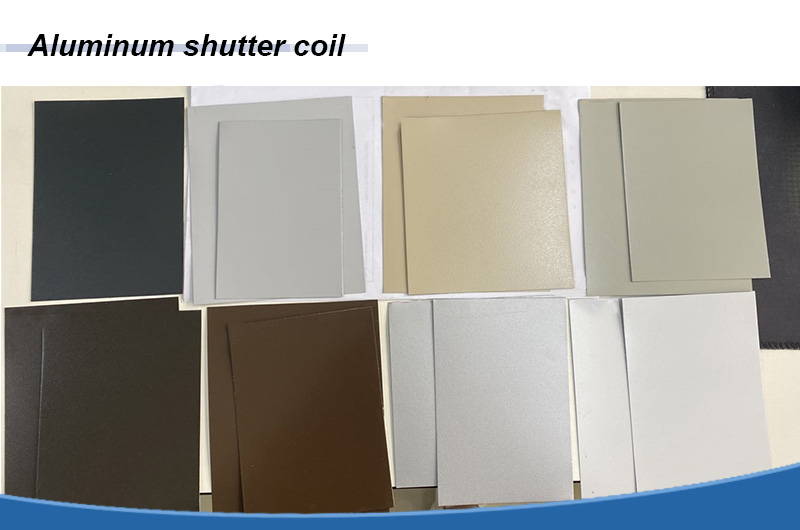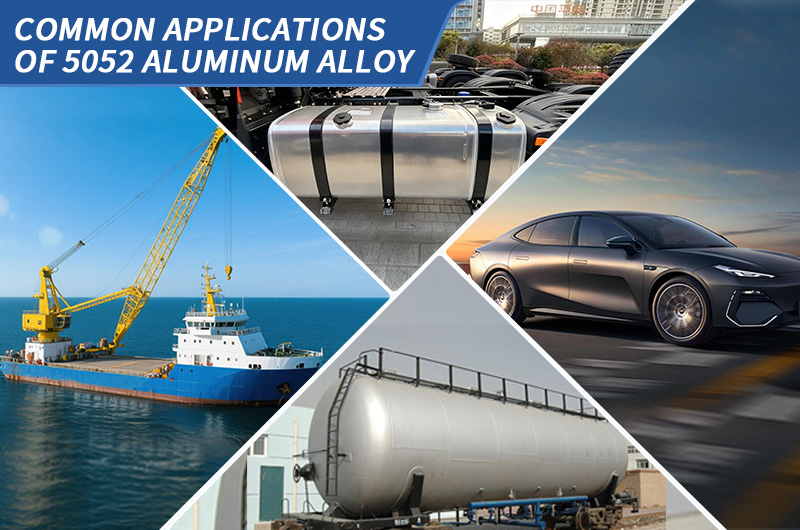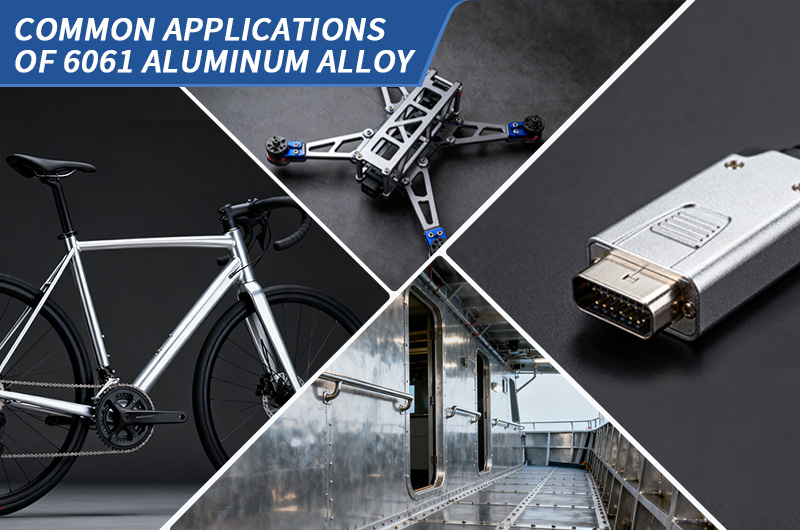14 Differences Between 5052 and 6061 Aluminum Alloys
5052 and 6061 are two widely used grades in aluminum alloys. However, they belong to different alloy series, have significant differences in core properties, and are suitable for different application scenarios. The following outlines 14 key differences between the two from dimensions such as core attributes, performance, processing, and applications.
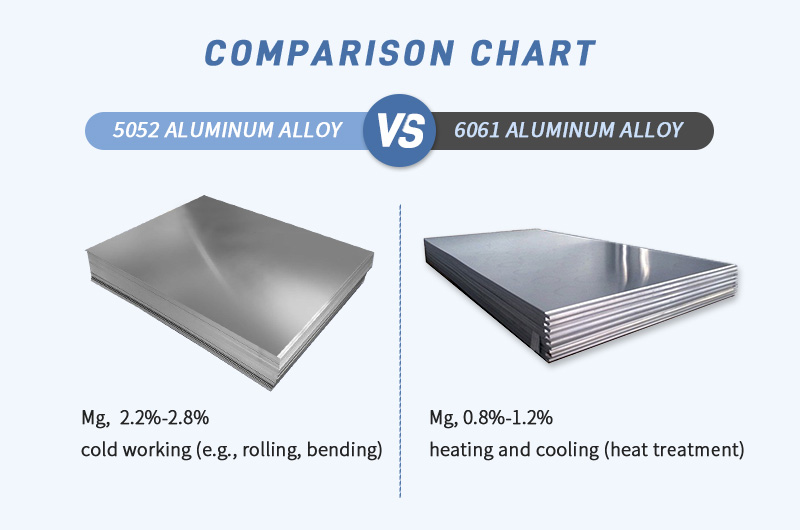
What Are 5052 and 6061 Aluminum Alloys?
The main component of 5052 aluminum
alloy is magnesium (Mg, content approx. 2.2%-2.8%). Its performance is
enhanced through "cold working (e.g., rolling, bending)" and cannot
be strengthened by heating (heat treatment).
Features: Excellent corrosion resistance (e.g., rust-proof in coastal or humid
environments), good formability (can be bent into complex shapes or stretched
into containers), and low cost.
The main alloying elements of 6061
aluminum alloy are magnesium (Mg, 0.8%-1.2%) and silicon (Si,
0.4%-0.8%). Its performance can be enhanced through "heating and cooling
(heat treatment)" and it is suitable for precision cutting.
Features: High strength (capable of bearing loads), good machinability (can be
milled into precision parts), and flexible performance (can be either soft or
hard).
Different Alloy Series and Core Elements
This is the most fundamental difference between the two, directly determining all subsequent performance variations:
- 5052 Aluminum Alloy: Belongs to the 5000 series (Al-Mg alloy). Its core alloying element is magnesium (Mg, content approx. 2.2%-2.8%), with no other major alloying elements (extremely low silicon and copper content).
- 6061 Aluminum Alloy: Belongs to the 6000 series (Al-Mg-Si alloy). Its core alloying elements are magnesium (Mg, 0.8%-1.2%) + silicon (Si, 0.4%-0.8%), and it also contains small amounts of copper (Cu, 0.15%-0.4%) and chromium (Cr, 0.04%-0.14%).
Chemical Composition of 5052 and 6061 Aluminum Alloys
| Element | 5052 Aluminum Alloy (%) | 6061 Aluminum Alloy (%) |
| Aluminum (Al) | Remainder (approx. 97.3%) | Remainder (approx. 97.9%) |
| Magnesium (Mg) | 2.2-2.8% | 0.8-1.2% |
| Silicon (Si) | ≤0.25% | 0.4-0.8% |
| Copper (Cu) | ≤0.10% | 0.15-0.40% |
| Chromium (Cr) | 0.15-0.35% | 0.04-0.35% |
| Manganese (Mn) | ≤0.10% | ≤0.15% |
| Iron (Fe) | ≤0.40% | ≤0.70% |
| Zinc (Zn) | ≤0.10% | ≤0.25% |
| Titanium (Ti) | — | ≤0.15% |
Different Strengthening Methods
The two alloys follow completely different strength improvement paths, which are the core basis for engineering selection:
- 5052: Strength can only be improved through work hardening (cold working hardening) — cold working processes such as cold rolling and stamping deform the internal grains of the metal, thereby increasing hardness and strength. It cannot be strengthened by heat treatment (e.g., quenching, aging); its strength will decrease and plasticity will be restored when heated.
- 6061: Strength is mainly improved through heat treatment strengthening (solution and aging treatment) — the alloy is heated to a high temperature (approx. 530°C) to fully dissolve the elements (solution treatment), rapidly cooled (quenching), and then insulated at a low temperature (approx. 120°C) (aging treatment). This causes magnesium and silicon elements to form fine precipitates, significantly increasing strength. It can also be supplemented with a small amount of work hardening.
Significant Differences in Mechanical Properties (Strength, Elongation)
Due to different strengthening methods, the "strength-plasticity" balance of the two alloys is completely different, directly corresponding to different load requirements:
| Performance Indicator (Typical Temper) | 5052-H32 (Work-Hardened Temper) | 6061-T6 (Heat Treatment-Strengthened Temper) | Key Difference Conclusion |
| Tensile Strength | Approx. 230 MPa | Approx. 310 MPa | 6061-T6 has over 35% higher strength than 5052, making it more suitable for load-bearing structures. |
| Modulus of Elasticity | 70.3 GPA | 68.9 GPA | 5052 is easier to form and process. |
| Yield Strength | Approx. 190 MPa | Approx. 276 MPa | 6061 has stronger deformation resistance. |
| Fatigue Strength | 117 MPa | 96.5 MPa | 5052 aluminum is easier to deform. |
| Thermal Conductivity | 138 W/m-K | 167 W/m-K | 6061 has good heat dissipation performance and can be used in heat sinks, heat exchangers, and other applications requiring heat dissipation. |
| Elongation (Before Fracture) | Approx. 12% | Approx. 10% | 5052 has better plasticity and is easier to bend and stretch. |
Difference in Corrosion Resistance (Especially Adaptability to Harsh Environments)
Magnesium content and alloy composition directly affect corrosion resistance:
- 5052: Excellent corrosion resistance — the moderate magnesium content (2.2%-2.8%) and absence of corrosion-prone elements such as copper allow it to easily form a dense oxide film. It can resist corrosion from seawater, humid air, and weak acid environments, making it a common corrosion-resistant aluminum in marine and chemical industries.
- 6061: Moderate corrosion resistance — due to the small amount of copper (Cu), it is prone to localized corrosion (pitting) in humid or salt-containing environments (e.g., coastal areas). Although its corrosion resistance can be improved by surface oxidation, it is generally inferior to 5052 and not suitable for long-term exposure to harsh corrosive environments.
Stress Corrosion Cracking (SCC) Resistance
"Stress Corrosion Cracking" refers to the brittle fracture of a material under the combined action of "tensile stress + corrosive environment", which is crucial for outdoor structures:
- 5052: Excellent SCC resistance — the low-copper, high-chromium composition design effectively inhibits the synergistic effect of corrosion and stress. Even in "seawater + slight tensile stress" environments (e.g., coastal guardrails, small marine components), it is rarely prone to SCC.
- 6061: Moderate SCC resistance — the copper element increases the risk of stress corrosion. If it is in a "humid + tensile stress" environment for a long time (e.g., load-bearing outdoor billboard supports, building beams in rainy areas), "stress relief annealing" (to eliminate residual processing stress) or "surface coating" is required to reduce the cracking risk; otherwise, its service life will be affected.
Difference in Cold Forming Properties (Applicability to Stamping, Bending)
The difference in plasticity determines cold working capabilities; 5052 is more suitable for "complex shape processing":
- 5052: Excellent cold formability — high elongation (12%) and low hardness (Vickers hardness approx. 68 HV in Temper H32) allow it to easily achieve deep drawing (e.g., fuel tanks, containers), complex bending (e.g., decorative frames), and stamping (e.g., electronic component housings) without cracking after processing.
- 6061: Poor cold formability — in Temper T6, it has high hardness (Vickers hardness approx. 107 HV) and low elongation, and can only undergo simple bending (a larger bending radius is required to avoid fracture). Deep drawing is not feasible. It needs to be annealed to soften (Temper O) before cold working, but its strength will decrease significantly after softening.
Difference in Machinability (Applicability to Cutting, Drilling)
Hardness and material toughness affect machining efficiency; 6061 is more suitable for "precision cutting":
- 5052: Moderate machinability — high plasticity and toughness cause it to easily "stick to the tool" during cutting (especially high-speed cutting), and burrs are prone to form on the surface. Special tools and cutting fluids are required. It is suitable for simple drilling and milling, but not for high-precision part processing.
- 6061: Excellent machinability — in Temper T6, it has moderate hardness and low brittleness, ensuring smooth chip evacuation and high surface finish (Ra value can easily reach below 1.6μm) during cutting. It can efficiently complete precision machining such as milling, boring, and tapping, making it the first choice for mechanical parts and structural components.
Difference in Weldability (Performance Retention Rate After Welding)
Welding has different effects on strength and corrosion resistance; 5052 is easier to weld:
- 5052: Good weldability — there is no significant strength decrease in the heat-affected zone (HAZ) during welding (since it does not require heat treatment strengthening), and the corrosion resistance only slightly decreases after welding, with no need for complex subsequent treatment. Tungsten Inert Gas (TIG) welding is commonly used, making it suitable for welding sealed structures such as containers and pipelines.
- 6061: Moderate weldability — the high temperature during welding destroys the aged precipitates in Temper T6, causing the strength of the HAZ to decrease by approximately 30%-40%. To restore strength, "solution + aging" treatment must be re-performed after welding (complex process with high cost). It is only suitable for welded structures with low strength requirements.
Different Responses to Heat Treatment (Flexibility in Performance Regulation)
Whether performance can be adjusted through heat treatment determines the "performance optimization space" of the material:
- 5052: No response to heat treatment — its strength cannot be increased through quenching or aging regardless of the heating temperature. Plasticity can only be restored by eliminating work hardening through "annealing (Temper O)" (the tensile strength of 5052 in Temper O is only approx. 170 MPa, with an elongation of 25%). The methods for performance regulation are limited.
- 6061: Sensitive to heat treatment — its performance can be adjusted through different heat treatment tempers:
- Temper O (Annealed): Tensile strength approx. 110 MPa, elongation 25%, suitable for cold working;
- Temper T4 (Natural Aging After Quenching): Tensile strength approx. 240 MPa, elongation 16%, suitable for scenarios requiring certain strength while retaining plasticity;
-
Temper T6 (Artificial Aging After Quenching): Highest strength
(310 MPa), suitable for load-bearing structures;
Its performance can be flexibly regulated to meet different requirements.
Significant Differences in Tempers Between 5052 and 6061 Aluminum Alloys
| Alloy | Available Tempers |
| 5052 | F, O, H12, H14, H16, H18, H19, H22, H24, H26, H28, H32, H34, H36, H38, H111, H112, H114 |
| 6061 | F, O, T4, T451, T42, T5, T6, T651, T6511, H112 |
Density and Lightweight Performance
Although both are aluminum alloys, slight differences in density of aluminum exist due to compositional variations, which affect extreme lightweight requirements:
- 5052: Density approx. 2.68 g/cm³ (slightly lower than pure aluminum due to higher magnesium content).
- 6061: Density approx. 2.70 g/cm³ (slightly higher than 5052 due to elements such as silicon and copper with slightly higher densities).
Although the absolute difference is small (only 0.7%), 5052 can achieve a more minimal weight reduction in large-scale structures (e.g., ship decks, large storage tanks).
Difference in Surface Treatment Effects
Although both can undergo surface treatments such as anodization and spraying, the final effects (color uniformity, hardness) differ due to compositional variations:
- 5052: Better anodization effect — its pure composition (low copper, low silicon) ensures uniform oxide film thickness (no spots easily formed) and good color consistency (e.g., small color difference when anodized to natural or light colors). The oxide film also has strong adhesion to the substrate, making it suitable for scenarios requiring high appearance quality (e.g., decorative panels, electronic product housings).
- 6061: Moderate anodization effect — impurities such as copper and silicon easily cause "local uneven film thickness" during anodization (especially in Temper T6), and slight color differences may occur when anodized to dark colors (e.g., black, dark gray). However, the hardness of its oxide film is slightly higher than that of 5052 (approx. 150 HV vs. 120 HV), making it suitable for scenarios requiring high surface hardness and having a higher tolerance for color differences (e.g., mechanical parts, supports).
Different Costs
Cost is determined by production processes and performance. Since 6061 aluminum alloy requires heat treatment (a complex process), its cost is high. In contrast, 5052 does not require heat treatment and only relies on work hardening (a relatively simple process), so 5052 aluminum alloy has a lower price. For inquiries, please contact us. You can also check the aluminum ingot price.
Common Product Forms (Sheet/Profile/Bar etc.)
In industrial production, the "mainstream supply forms" of the two alloys differ, directly affecting material selection during design:
- 5052: Mainly supplied as "sheets" — due to its good cold formability, over 90% of 5052 aluminum sheets have a thickness of 0.2-6mm (e.g., decorative sheets, fuel tank sheets). Thick plates (>6mm) or solid bars are rarely produced, as thick materials have no obvious strength advantages and are difficult to process.
- 6061: Available in more diverse forms, with a high proportion of "thick plates + profiles + bars" — due to its high strength and good machinability, in addition to sheets, it is also widely produced as 6061 aluminum plates with a thickness of 6-50mm (e.g., mechanical structural components), extruded profiles (e.g., aluminum alloy frames, solar panel brackets), and solid bars (e.g., for processing precision shaft parts), adapting to more diverse structural design needs.
Different Application Scenarios
Common Applications of 5052 Aluminum Alloy
- Corrosion-resistant scenarios: Marine equipment, chemical storage tanks, parts for saltwater environments;
- Forming scenarios: Fuel tanks, beverage cans, deep-drawn containers, decorative panels;
- Lightweight scenarios requiring plasticity: Automotive trim panels, electronic housings.
Common Applications of 6061 Aluminum Alloy
- Load-bearing structures: Mechanical parts, bicycle frames, drone frames;
- Precision machining: Machine tool components, tooling fixtures, connectors;
- Medium-strength structures: Construction profiles, solar panel brackets, ship internal structures.
How to Quickly Choose Between 5052 and 6061?
- Choose 5052 if you need corrosion resistance, easy formability (bending/stretching), and low cost;
- Choose 6061 (preferably Temper T6) if you need high strength, good machinability, and adjustable performance;
- Prioritize 5052 if performance retention after welding is required; if load-bearing capacity after welding is needed, accept the cost of secondary heat treatment for 6061.
